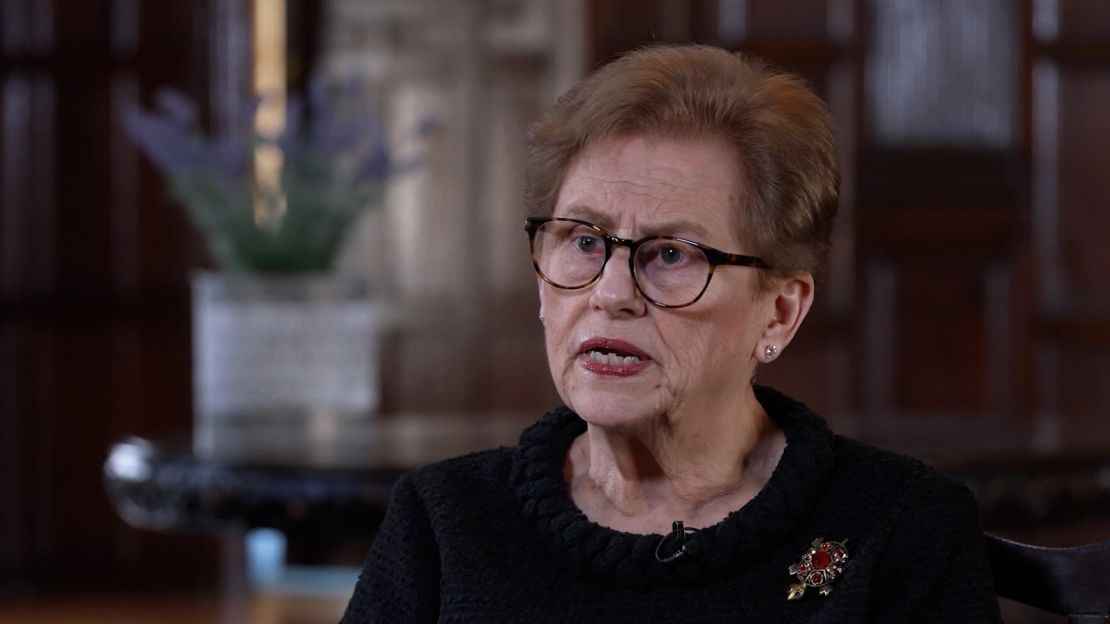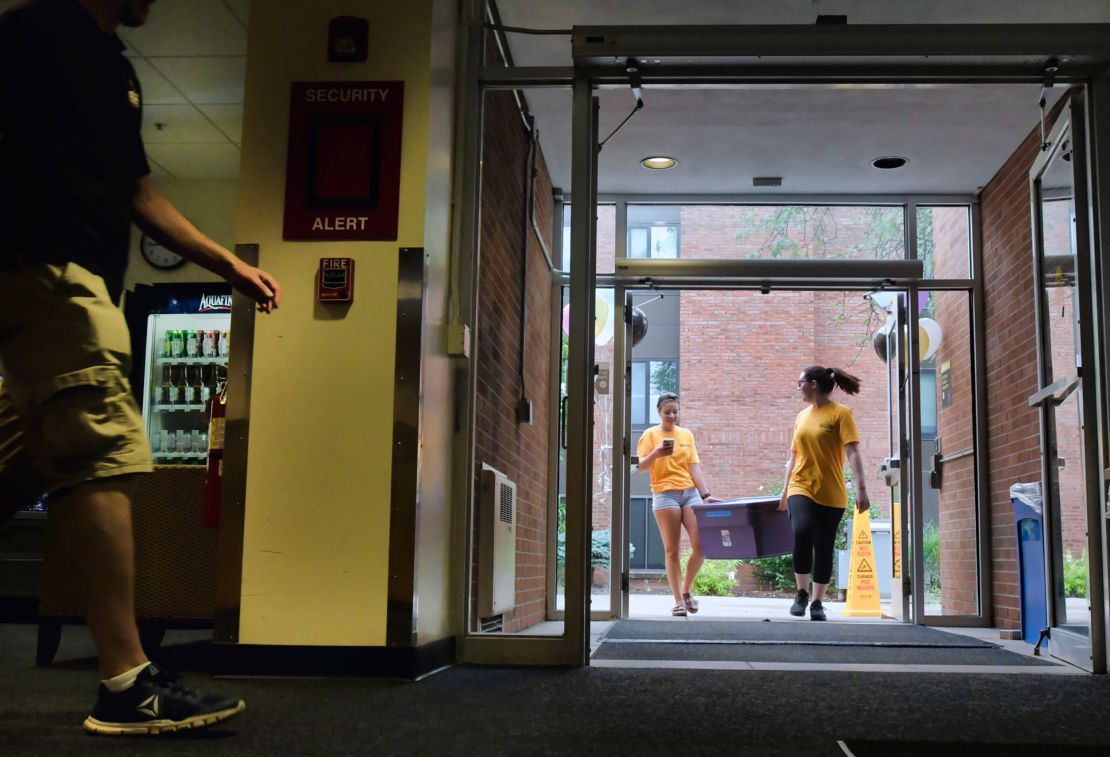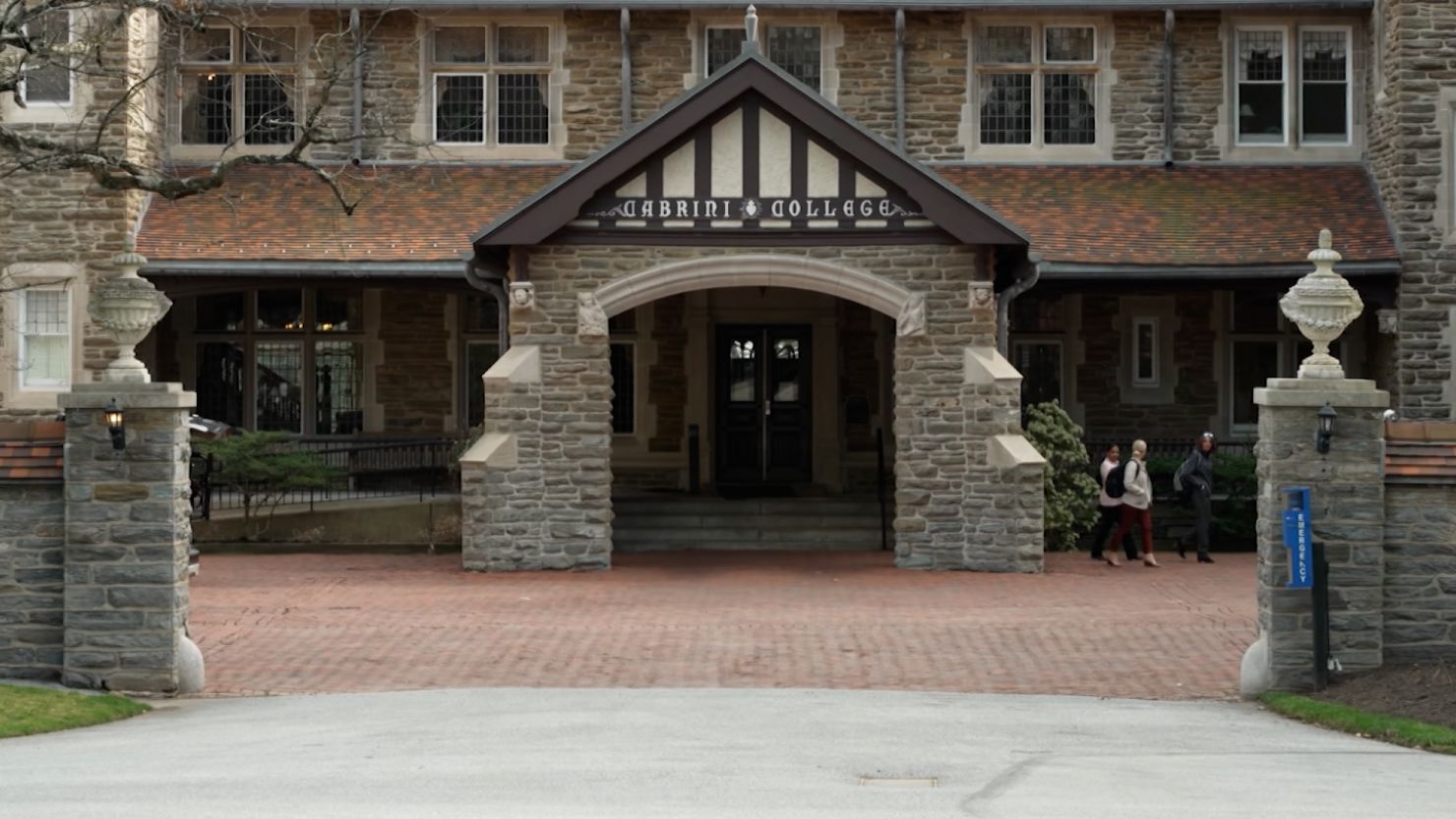Cabrini University hoped to save itself.
Enrollment at the small, Catholic liberal arts college in Radnor, Pennsylvania, had fallen more than 60 percent since 2016, putting the tuition-dependent school with a small endowment under serious financial pressure.
When Helen Drinan arrived to serve as interim president in June 2022, she quickly grew concerned that while Cabrini had already made cuts in staffing and other areas, there was more work to be done.
“The overarching need was new revenue generating,” Drinan told CNN. “That is the most significant thing you can do. You can cut lots of different things, but if you can’t build new revenue, you really are playing for time.”
Drinan had faced this sort of challenge before, at Simmons University in Boston, which she led from 2008 to 2020. There, too, she had taken office at a time of financial precarity, with Simmons struggling to make payroll. It took about 18 months to turn things around, stabilizing the school’s finances through staff reductions and finding new sources of revenue, including developing an online graduate education program in nursing, according to a case study by the Association of Governing Boards of Universities and Colleges.
But time ran out for Cabrini to carry out such a strategy. The university announced in June 2023 it will close this summer.
Cabrini is one of a growing number of US colleges and universities facing financial strain – often due to increasing operating costs, poor fundraising and declining enrollment. Some schools have chosen to merge with other institutions. Others are cutting programs and staff or, like Cabrini, shutting down altogether.

Following a wave of closures of for-profit colleges in the mid-2010s, closures of non-profit institutions began rising in 2017, before slowing briefly in 2020-21, according to Rachel Burns, a senior policy analyst at the State Higher Education Executive Officers Association. She described the current trend as a “catch-up period” from the last four years, with many institutions yet to recover from the Covid-19 pandemic and the expiration of federal aid that had kept some schools afloat.
“Institutions that were not in a great place prior to the pandemic survived the pandemic because of that additional funding, but now they’re back where they were before,” Burns said.
“Another issue is the demographic cliff that is coming really from the declining birth rates,” Burns said, with fewer high school graduates meaning fewer potential college students. “Then there are enrollment declines because the cost of college has increased so substantially.”
Overall, enrollment at 4-year colleges in the US peaked at nearly 18.1 million in 2010 and fell each year until 2021, according to data from the National Center for Education Statistics, which estimates enrollment will slowly rise over the next decade but remain under the 2010 high.
In fall 2023, overall undergraduate enrollment went up 2.1% but there was a 3.6% decline in freshman enrollment, according to the National Student Clearinghouse Research Center.
Fewer colleges, fewer college graduates
Private, liberal arts colleges have been hit hard, especially in the Northeast and the Midwest. At least seven schools have closed in New York since 2020, including Cazenovia College, outside Syracuse, which graduated its final class in 2023.
The concern? Fewer colleges will mean fewer college graduates.
“There are a number of roles that are open right now to individuals who don’t have any college education and I think we’re becoming more accepting of opening up positions to individuals with a high school education, but on the other side of that, the workforce is evolving so quickly that most jobs will require, if not some college education, a four-year degree,” Burns said. “We need to make sure that we’re creating a workforce that can fill that demand.”
Meanwhile, four-year institutions that once catered to adult learners and first-generation college students, like Hodges University in Fort Myers, Florida, also are shutting down. Hodges had already raised tuition, cut programs and sold buildings to try to stay open, but could not compete with state schools and is closing this summer.
“What is going to be lost is the commitment that we had to making sure that higher education was accessible to everyone,” said Hodges President Charlene Wendel. “Because not everybody can go travel out of their community to go to school.”
The century-old College of Saint Rose in Albany, New York, sparked anger and concern when news leaked in December that it would graduate its final class in May.

“I am so angry at the fact that our students, our faculty, our employees, the parents of our students had to hear this news in the press rather than from us,” Saint Rose President Marcia White said at a news conference, while calling the board’s sudden decision “excruciating.”
Saint Rose’s aim is to graduate as many students as possible and to help others continue their education at other institutions, the school’s director of communications, Denise Dagnino, said.
Closures put students at risk of dropping out
In the case of Cabrini, leaders reached a deal with nearby Villanova University, another Catholic institution, to take over the campus. Villanova agreed to preserve part of the legacy of Mother Cabrini, the first American saint of the Catholic church, though the specific plans for the Cabrini campus are unclear.
Drinan said research shows colleges that close haphazardly, without helping students find their next opportunity, jeopardize their chances of earning a degree. Cabrini partnered with four Pennsylvania colleges with a similar profile – Ursinus College, Holy Family University, Gwynedd Mercy University and Eastern University – that have agreed to match students’ financial aid packages and allow them to transfer credits.
Colin Tomczak, a junior from Philadelphia, said he was concerned and scared when he learned via email last summer Cabrini would close. He and his mother spent hours discussing what to do.
“It took until probably my sophomore year for me to actually feel like I started to belong here. And very shortly after I felt like I had friends and could actually see myself finishing my four years here is when they told me we were closing down,” Tomczak said. “But honestly, the process here when I came back, the amount of help I got from people, definitely helped me steer away from just dropping out entirely.”
After counselors walked him through his options, Tomczak decided to transfer to Eastern, just down the road from Cabrini, partly because he likes the school’s writing program and heard many other students, friends and faculty would be transferring there.
There is no end in sight for closures, particularly of private, non-profit institutions, as enrollment continues to decline, Burns said, but part of what the industry is experiencing could be viewed as beneficial ‘right-sizing’.
“There are some closures that are really unfortunate and fall outside of the right-sizing that just are devastating for students,” she said. “But some of the closures, while it’s still really challenging for students, are potentially in the long term the best thing for the field as a whole because it is allowing the limited resources that we have at the state and federal level to go to the institutions that are most likely to provide high quality education for students.”



